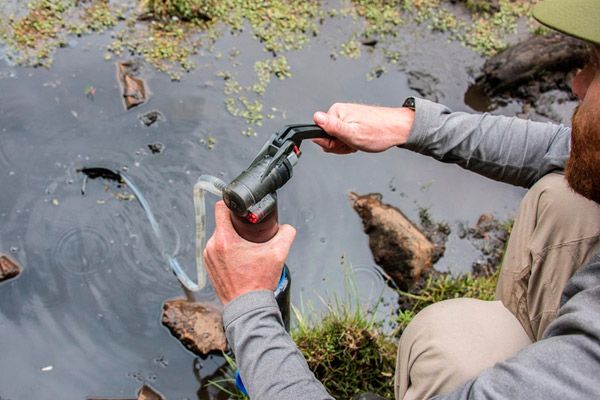New publications
A new polymer will clean water quickly
Last reviewed: 02.07.2025

All iLive content is medically reviewed or fact checked to ensure as much factual accuracy as possible.
We have strict sourcing guidelines and only link to reputable media sites, academic research institutions and, whenever possible, medically peer reviewed studies. Note that the numbers in parentheses ([1], [2], etc.) are clickable links to these studies.
If you feel that any of our content is inaccurate, out-of-date, or otherwise questionable, please select it and press Ctrl + Enter.
Clean water is a luxury in some areas and to make water more or less drinkable, it is often simply left in a clean transparent bottle in the sun. But such "cleaning" can take up to 2 days and a team of scientists from Stanford has proposed a faster way to clean water from contaminants.
The new device, developed by experts, is also powered by ultraviolet light and can destroy up to 99.9% of bacteria in a short time.
The small black rectangle looks like ordinary glass, but this is only at first glance - molybdenum disulfide is applied to the glass substrate, the edges of which are covered with copper. Under the influence of ultraviolet light, both copper and molybdenum disulfide are activated as photocatalysts and begin to cause processes in the water that promote the formation of bactericidal substances, which simply dissipate after the destruction of bacteria.
The speed of the new method is that visible light transmits 50% of the energy, and ultraviolet rays only 4%. Experts noted that the new method is only suitable for water contaminated with bacteria; such a device will not help with chemical contamination.
The testing was conducted with 3 types of bacteria, but scientists suggest that the device will help with other types of bacterial contamination as well.
Scientists around the world are trying to find a way to quickly and effectively purify water. Recently, at Cornell University, experts created a new material that could radically change the approach to purifying contaminated water, especially in regions where there is an acute shortage of clean water.
Experts have developed a new version of porous cyclodextrin, which has an increased absorption rate (research has shown that absorption is 200 times greater than in traditional methods).
Scientists noted that the material is capable of absorbing contaminants from water in just a few seconds, literally from a running tap, i.e. effective water purification with low energy consumption.

Cyclodextrin is primarily used in well-known brands of air fresheners, where this substance acts as an absorber of unpleasant odors and pollutants from the air.
Activated carbon is currently used primarily in water purification filters, but it has a larger surface area and less ability to absorb contaminants than cyclodextrin filters.
According to the head of the scientific project, the new material has a high specific area and combines all the advantages of activated carbon and cyclodextrin, in addition, the resulting polymer can be processed while maintaining its original efficiency. Standard carbon filters require heat treatment before reuse, while filters with cyclodextrin can be rinsed with alcohol.
A team of Cornell University specialists has been allocated $625,000 for research. The specialists plan to spend part of the money on researching the properties of cyclodextrin for water purification, and the rest will be used to ensure that the development is produced for mass consumption.

 [
[